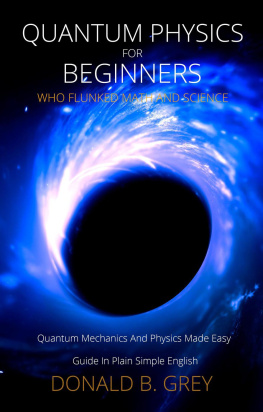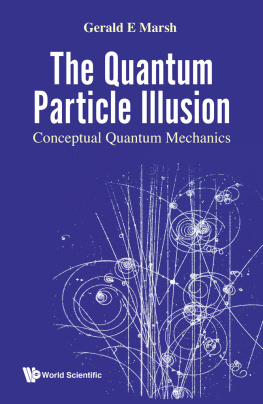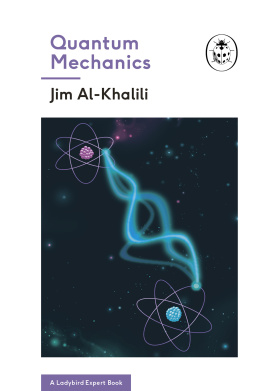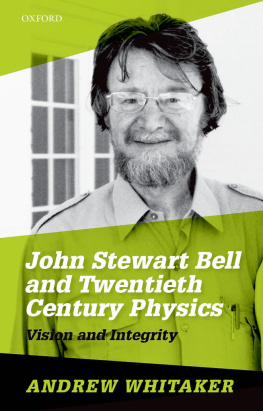Quantum Profiles
[Blank Page]
Quantum Profiles
J eremy B ernstein
PRINCETON UNIVERSITY PRESS
PRINCETON, NEW JERSEY
Copyright 1991 by Princeton University Press Published by Princeton University Press, 41 William Street, Princeton, New Jersey 08540
In the United Kingdom: Princeton University Press, Oxford All Rights Reserved
Besso originally appeared in the New Yorker , in slightly different form, as A CRITIC AT LARGE.
Library of Congress Cataloging-in-Publication Data
Bernstein, Jeremy, 1929-Quantum profiles / Jeremy Bernstein p. cm.
Includes bibliographical references and index.
ISBN 0-691-08725-3 (alk. paper)
1. Quantum Theory. 2. PhysicistsInterviews.
3. PhysicistsBiography. I. Title. QC174. 12. B464 1991 530. 1'2'0922dc20 90-40843
This book has been composed in Adobe Laser Janson
Princeton University Press books are printed on acid-free paper, and meet the guidelines for permanence and durability of the Committee on Production Guidelines for Book Longevity of the Council on Library Resources
Printed in the United States of America by Princeton University Press, Princeton, New Jersey 5 7 9 10 8 6 4
Contents
[Blank Page]
Some years ago I had a number of conversations with the late I. I. Rabi about his life and work. Toward the end of our talks, Rabi expressed his unhappiness at the fact that the revolution in physicsabove all, the quantum revolutionappeared to be having such a small impact on our general cultural life. As he put it, Its a great pity that the general public has very little inkling of the tremendous excitementintellectual and emotional excitementthat goes on in the advanced fields of physics. Neither Rabi nor I had any idea how rapidly this would change. We are now awash in public excitement about the advanced fields of physics and, above all, about quantum mechanics. One sometimes has the feeling that much of the general public, ranging from New Age gurus to playwrights, from literary critics to futuristic economists, and on and on, have decided, as the phrase goes, that quantum mechanics is much too serious to be left to the physicists. As a physicist, I look at this curious development with a mixture of enthusiasm, amusement, and dismay. The dismay comes about because the theory is being asked questions that neither it, nor any other scientific theory, is designed to answer. Quantum theory is not New Age mysticism, it is hard science. Bells theorem is not a mantra, it is a theorem. The Einstein-Podolsky-Rosen experiment is not done in ashrams, it is done in physics laboratories.
Preface
When, as a writer, my level of dismay is high enough I do something about it. I write. But how? For me, the most congenial way of communicating science has been through the medium of the profile. When I wanted to learn something, both for my own sake and for that of a potential reader, I would pick out one or more individuals who were identified with that field of work and go and talk to themsometimes for hours, sometimes for days, and sometimes for weeks. Or I would read about them in such detail that, by the end, I was almost talking to them. That is what this book is meant to feel likea series of conversations carried on, on the readers behalf and my own, about the deep [Page vii] issues of quantum mechanics. Hence the odd title Quantum Profiles. After reading this book I hope that the reader will have a real sense of what these issues are and also what they are not. I hope that these profiles convey the intellectual and emotional excitement of this enterprise, but do so honestly, without any compromise in scientific integrity. I also hope they are fun to read. They gave me much joy to write.
While I cannot personally thank Einstein and Besso, the subjects of the last of these profiles, I can thank John Wheeler and John Bell, the subjects of the first two. Both of these remarkable men spent hours talking to me, and sometimes, as I was writing these profiles, I could almost hear them talking to each other. I would also like to thank several colleagues who made comments on the writing at various stages. They include L. Brown, S. Coleman, G. Feinberg, M. Gell-Mann, D. Mermin, A. Pais, and A. Shimony. I have learned much from them as well.
New York
February 1990
[Page viii]
Quantum Profiles
[Blank Page]
John Stewart Bell
QUANTUM ENGINEER
In 1902 the Olympia Academy was founded in Bern, Switzerland. It had three members: Maurice Solovine, Conrad Habicht, and Albert Einstein. Solovine, a young student, had answered a newspaper advertisement offering private tutoring in physics by Einstein for three Swiss francs an hour, while Habicht, who was studying mathematics with the idea of becoming a secondary school teacher, already knew Einstein. The three young men had regular evening Academy meetings over the next three years, at which they studied philosophy and discussed physics. Solovine, who was Romanian, recalled having eaten caviar in his parents home in Romania, and on one of Einsteins birthdays he and Habicht treated Einstein to some expensive caviar, which he had never tasted. As luck would have it, that was the evening that Einstein was scheduled to talk to the Academy about Galileos principle of inertia. He became so absorbed that he ate all the caviar without realizing what he was eating.
In 1905 the group broke up when Habicht and Solovine left Bern. However, they began corresponding almost at once, and in one of his earliest letters to Habicht, written in the spring of 1905, Einstein described his program of research for the year in the sort of cheerful tone one might use to describe a little light reading. It was, however, this research program that laid the foundations of twentieth-century physics. He writes, I promise you four papers... the first... deals with radiation and energy characteristics of light and is very revolutionary... The second work is a determination of the true size of the atom from the diffusion and viscosity of dilute solutions of neutral substances. The third proves that assuming the molecular theory of heat, bodies whose dimensions are of the order of 1/1000 mm, and are suspended in fluids, should experience measurable disordered mo- [Page 3] tion, which is produced by thermal motion. It is the motion of small inert particles that has been observed by physiologists, and called by them Browns molecular motion. The fourth paper exists in first draft and is an electrodynamics of moving bodies employing a modification of the doctrine of space and time; the purely kinematical part of this work will certainly interest you. What is striking about this list apart from the fact that it was compiled by a then totally unknown twenty-six-year-old physicist is that the first paper announces, it turns out, the invention of the quantum, while the last paper announces the invention of the theory of relativity, and, of the two, it is only the former that is in the young Einsteins view revolutionary.
The theory of the light quantum, which Einstein initiated in 1905 and which is with us still, is certainly the most revolutionary development in the history of physics and arguably in the history of science. The creators of the theory, men such as Einstein, Niels Bohr, Werner Heisenberg, Erwin Schrdinger, Wolfgang Pauli, and Paul Dirac, were often struck by the apparent absurdity the utterly noncommonsensical aspects of the world depicted by the quantum theory. Long after he had done this seminal work, Heisenberg recalled that an intensive study of all questions concerning the interpretation of quantum theory in Copenhagen finally led to a complete and, as many physicists believe, satisfactory clarification of the situation. But it was not a solution which one could easily accept. I remember discussions with Bohr which went through many hours till very late at night and ended almost in despair; and when at the end of the discussion I went alone for a walk in the neighboring park I repeated to myself again and again the question: Can nature possibly be as absurd as it seemed to us in these atomic experiments.
Next page







